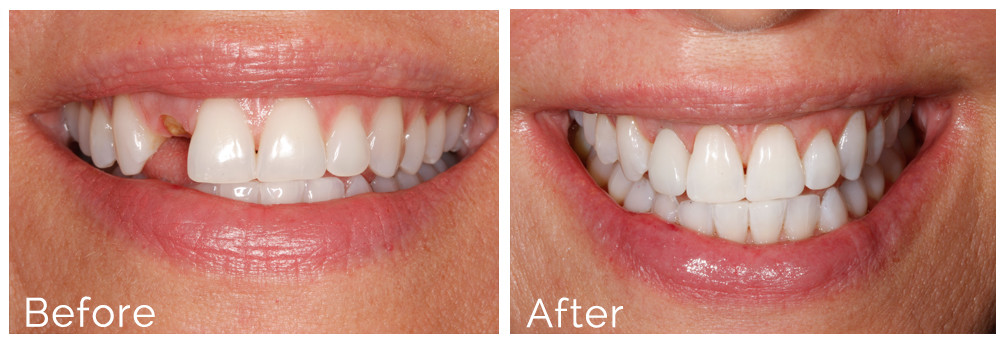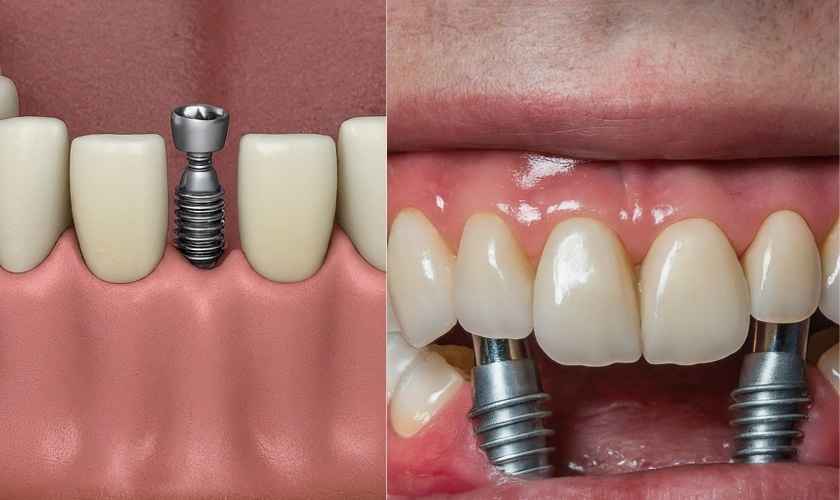8 Easy Facts About Dental Sense Described
8 Easy Facts About Dental Sense Described
Blog Article
The Single Strategy To Use For Dental Sense
Table of ContentsDental Sense for DummiesThe smart Trick of Dental Sense That Nobody is DiscussingSee This Report on Dental SenseThe Facts About Dental Sense Revealed
are clinical gadgets operatively dental implanted into the jaw to restore a person's ability to eat or their appearance. They offer assistance for fabricated (fake) teeth, such as crowns, bridges, or dentures. When a tooth is shed as a result of injury or condition, a person can experience problems such as quick bone loss, defective speech, or adjustments to eating patterns that lead to discomfort.Oral dental implant systems contain a dental implant body and dental implant joint and might likewise consist of a joint addiction screw. Cosmetic dentistry services. The dental implant body is surgically placed in the jawbone in location of the tooth's root. The dental implant joint is generally attached to the dental implant body by the joint addiction screw and expands via gum tissues right into the mouth to support the affixed man-made teeth
(https://allmyfaves.com/dentalsense1?tab=Dental%20Sense)Structure of The Oral Implant System choosing oral implants, speak to your oral company regarding the prospective benefits and risks, and whether you are a candidate for the procedure. Things to think about: Your general wellness is an essential aspect in determining whether you are a great prospect for oral implants, just how long it will certainly take to heal, and how much time the dental implant might remain in place.
Smoking might affect the recovery procedure and decrease the lasting success of the implant. The healing process for the implant body may take several months or longer, during which time you commonly have a short-term abutment instead of the tooth. the dental implant procedure: Carefully comply with the oral health instructions offered to you by your dental supplier.
Some Known Factual Statements About Dental Sense
Implant failure can lead to the need for one more procedure to fix or change the dental implant system. Recovers the ability to eat Recovers cosmetic look Helps maintain the jawbone from reducing because of bone loss Preserves the wellness of the surrounding bone and gums Helps keep adjacent (close-by) teeth stable Boosts quality of life Damage to surrounding natural teeth throughout implant placement Injury to the surrounding cells during surgical treatment, such as sinus opening Injury throughout surgical treatment (for example, fracture of bordering jawbone) Insufficient feature, such as feeling like the teeth do not attack together typically A sensation that the tooth hangs or twisting in area arising from a joint screw loosening up Implant body failure (looseness of the dental implant body) because of systemic infection, which may be a lot more most likely in clients with unchecked diabetes mellitus because of regional infection in bone and gum tissues supporting the dental implant body due to postponed recovery, which might be most likely in people who smoke Problem cleaning the gum tissues around the dental implant, resulting in poor oral health Without treatment periodontal condition Post-surgical numbness because of nerve impingement or damage Constantly inform healthcare providers and imaging technicians that you have oral implants prior to any type of magnetic vibration imaging (MRI) or x-ray procedures.
FDA is not familiar with any kind of adverse events reported for MRI or x-ray treatments with dental implants. Dental implants systems are normally constructed from materials that follow worldwide agreement criteria of the International Company for Standardization (ISO) or ASTM International. These criteria have information of what makes a secure product.

A dental implant is a framework that replaces a missing tooth. With screw-like devices, the cosmetic surgeon inserts a dental implant into the jawbone, and it acts as an anchor for a fabricated tooth, called a crown. A device called a joint attaches the artificial tooth to the dental implant. The crown is tailor-made to fit the person's mouth and match the color of their teeth.
The Ultimate Guide To Dental Sense
Some individuals are not qualified for dental implant surgery. It is for oral specialists to operate individuals with: acute illnessuncontrollable metabolic diseasebone or soft cells disease or infectionIf these problems are resolved, an individual can have the surgical procedure. In, dental surgeons refrain from operating individuals with: If people with any one of the above undertake oral implant surgery, there is a greater threat of the implant stopping working.

Dental dental implant surgery is an individualized process. Give you time to heal. Affix the article and last crown, bridge or denture.
Next, your surgeon will meticulously place the oral implant right into your jaw. If your implant is near the front of your mouth, your dental professional will make a short-term tooth for you to use until you heal.
Not known Facts About Dental Sense
Your service provider can inform you what to expect in your scenario. Throughout the healing stage, your jawbone should fuse to the oral implant. This procedure, called osseointegration, is important for security and long-lasting success. This process can take anywhere from three to 9 months. In many cases, it might take much longer.
Once your implant heals, your dental practitioner can affix the abutment (small port article) and your final restoration (crown, bridge or denture). This usually takes concerning one hour to finish and may need a 2nd minor surgical procedure. You shouldn't really feel any pain during your dental implant treatment since your provider will use medicine to numb your periodontals.
Report this page